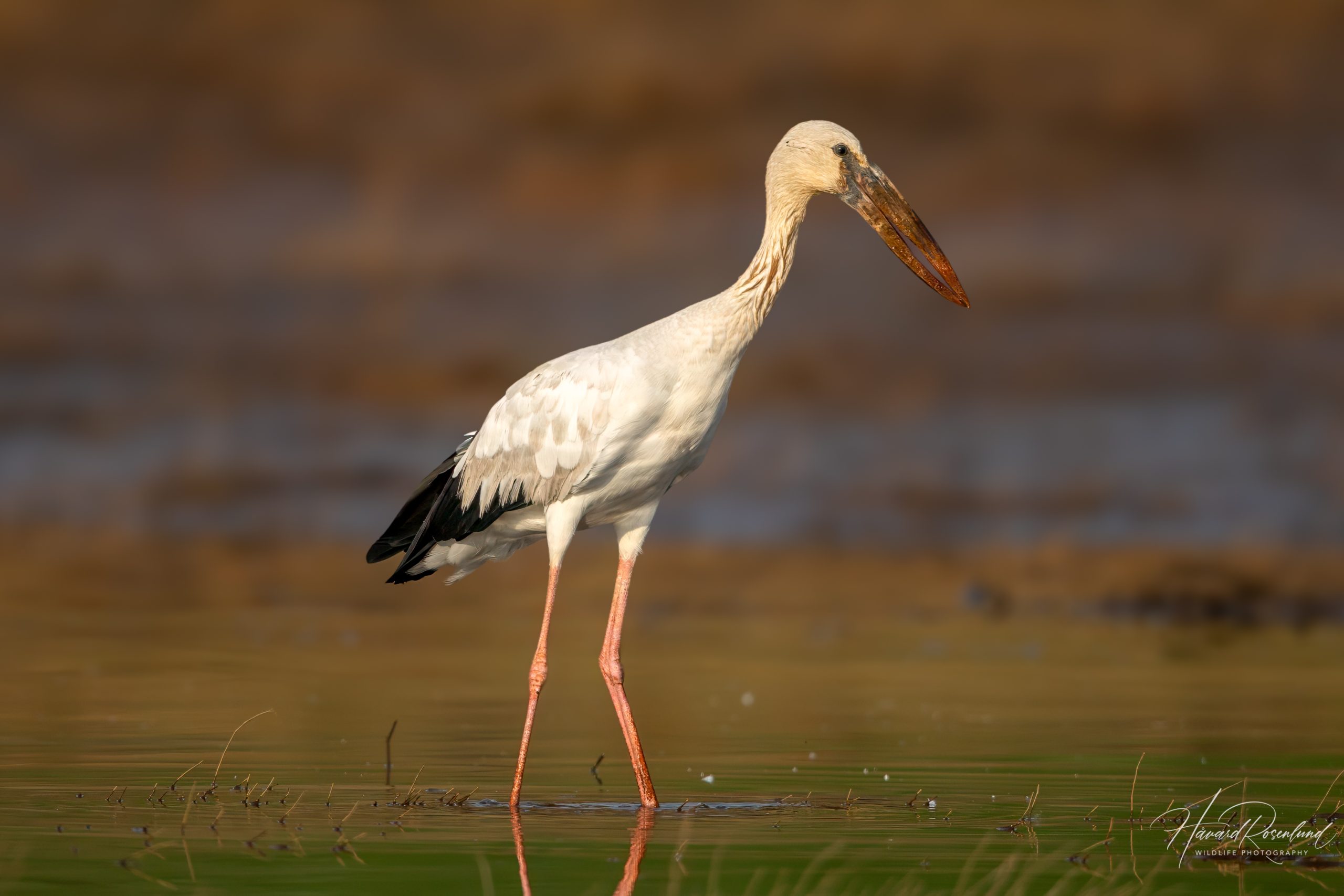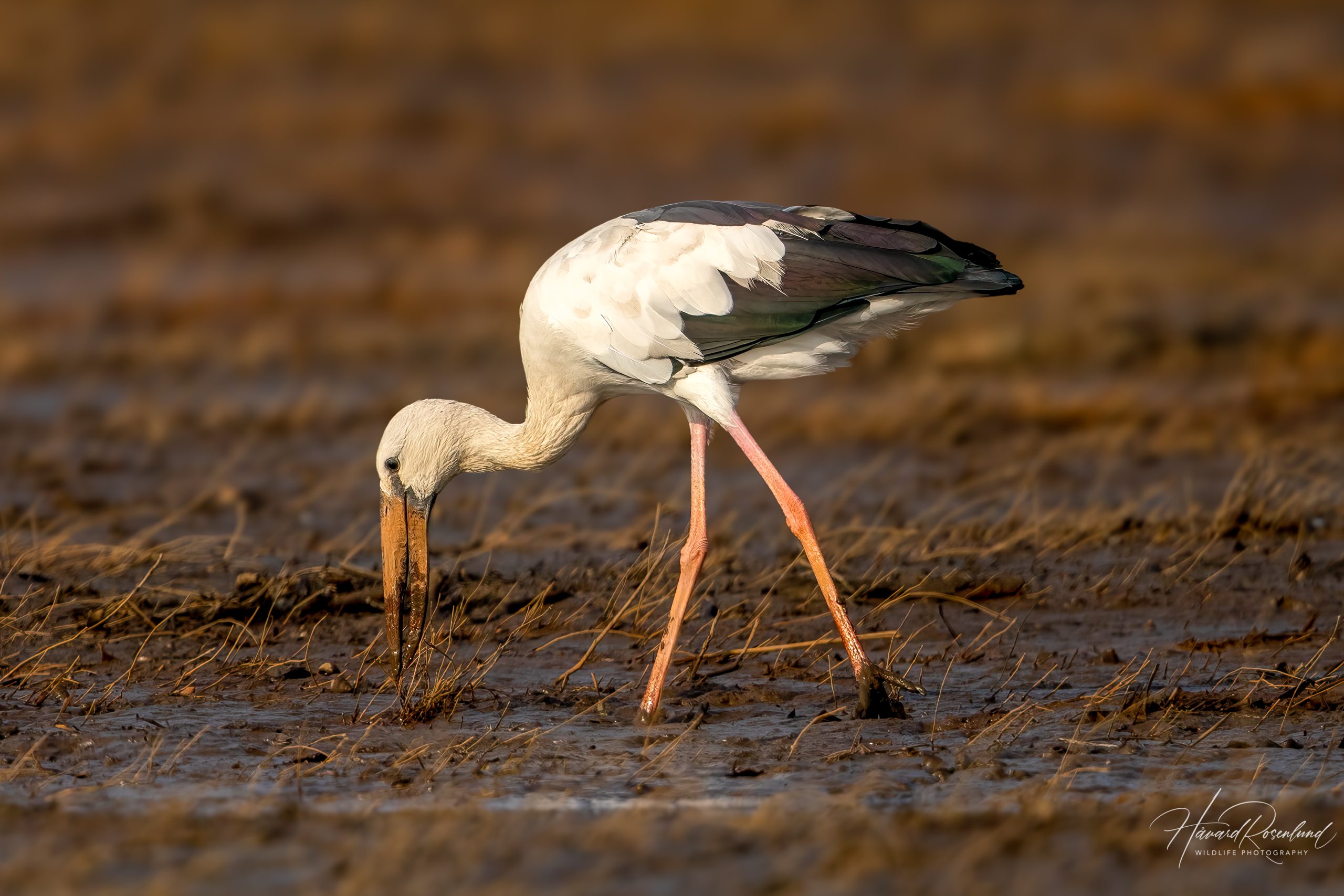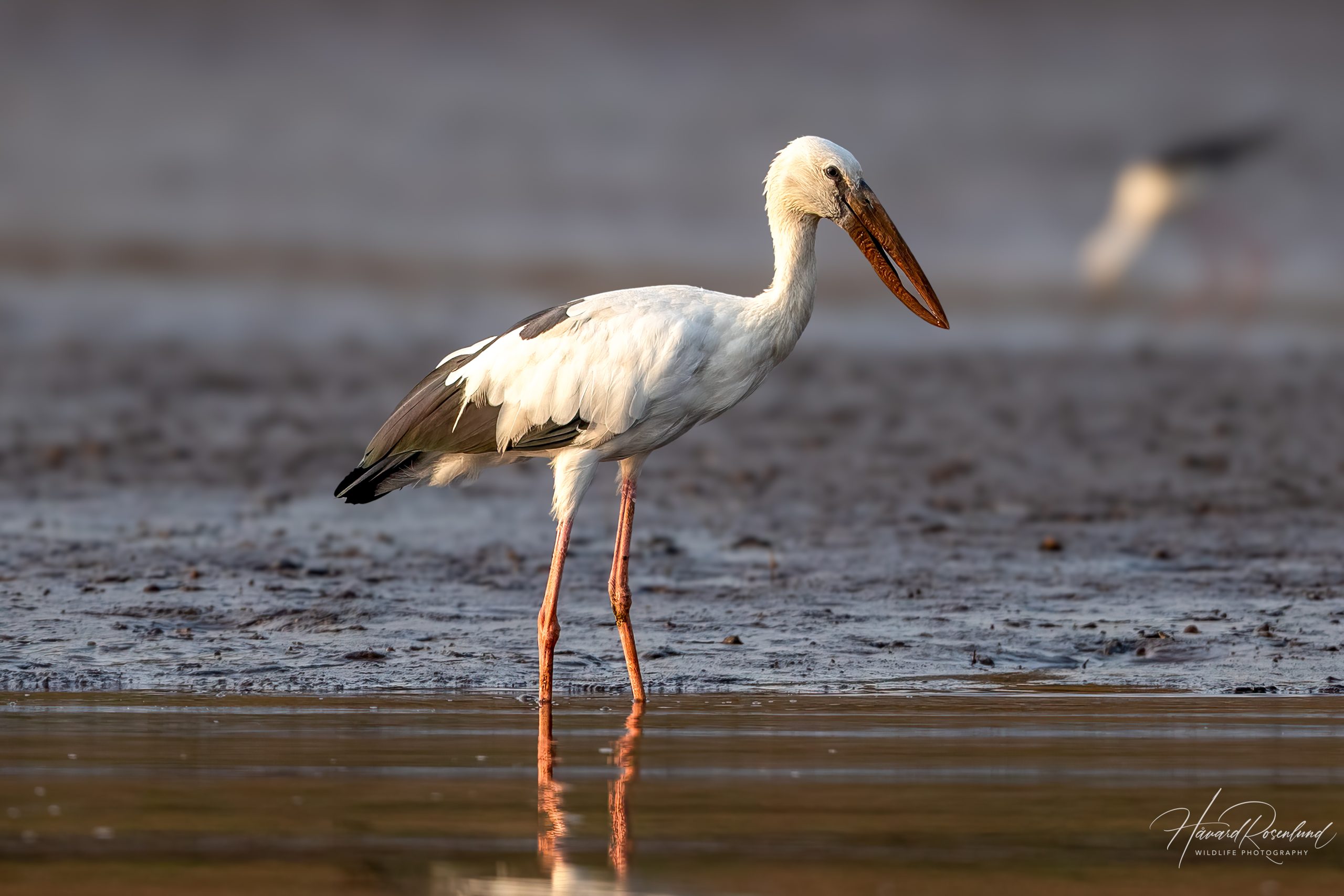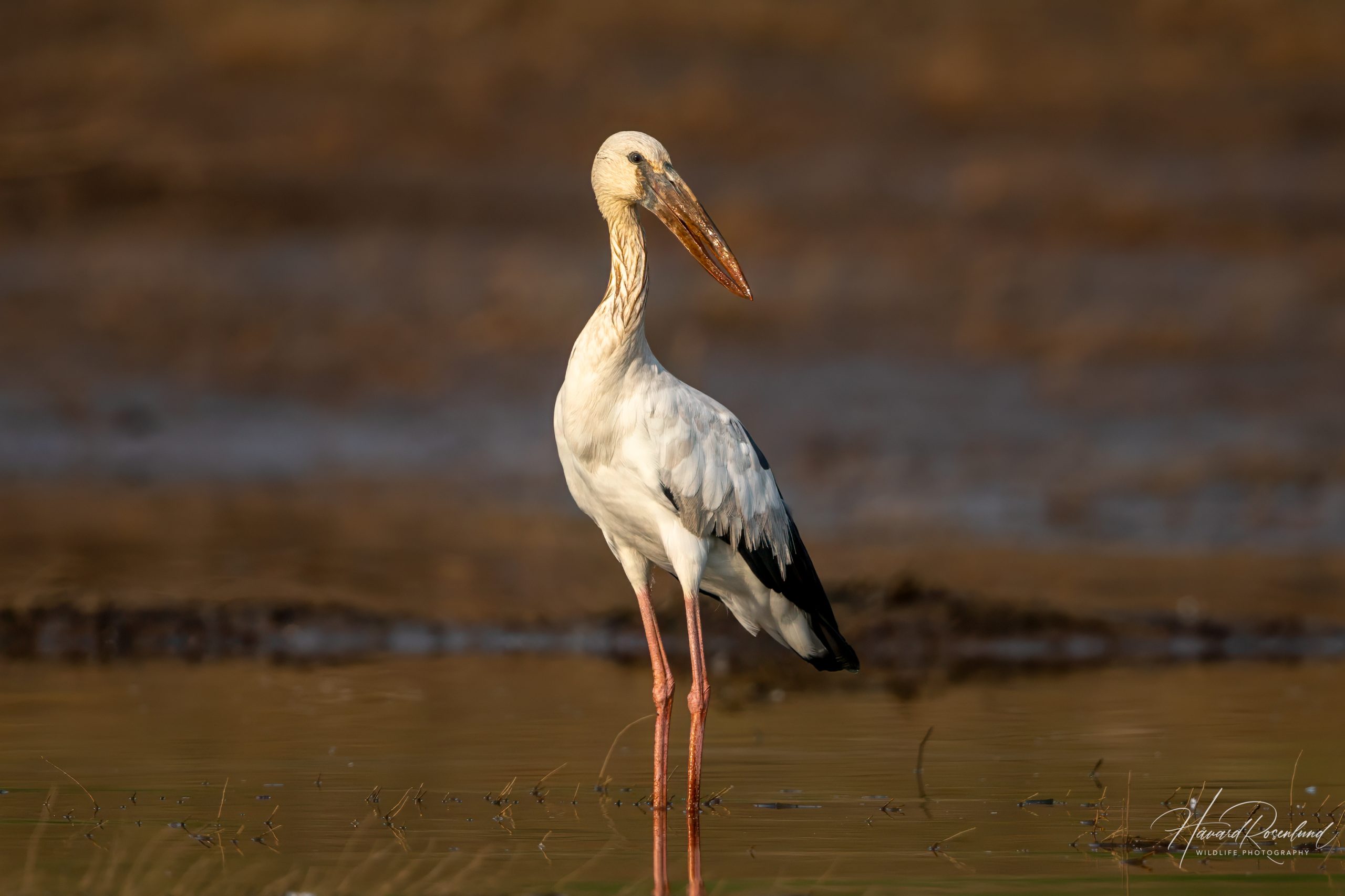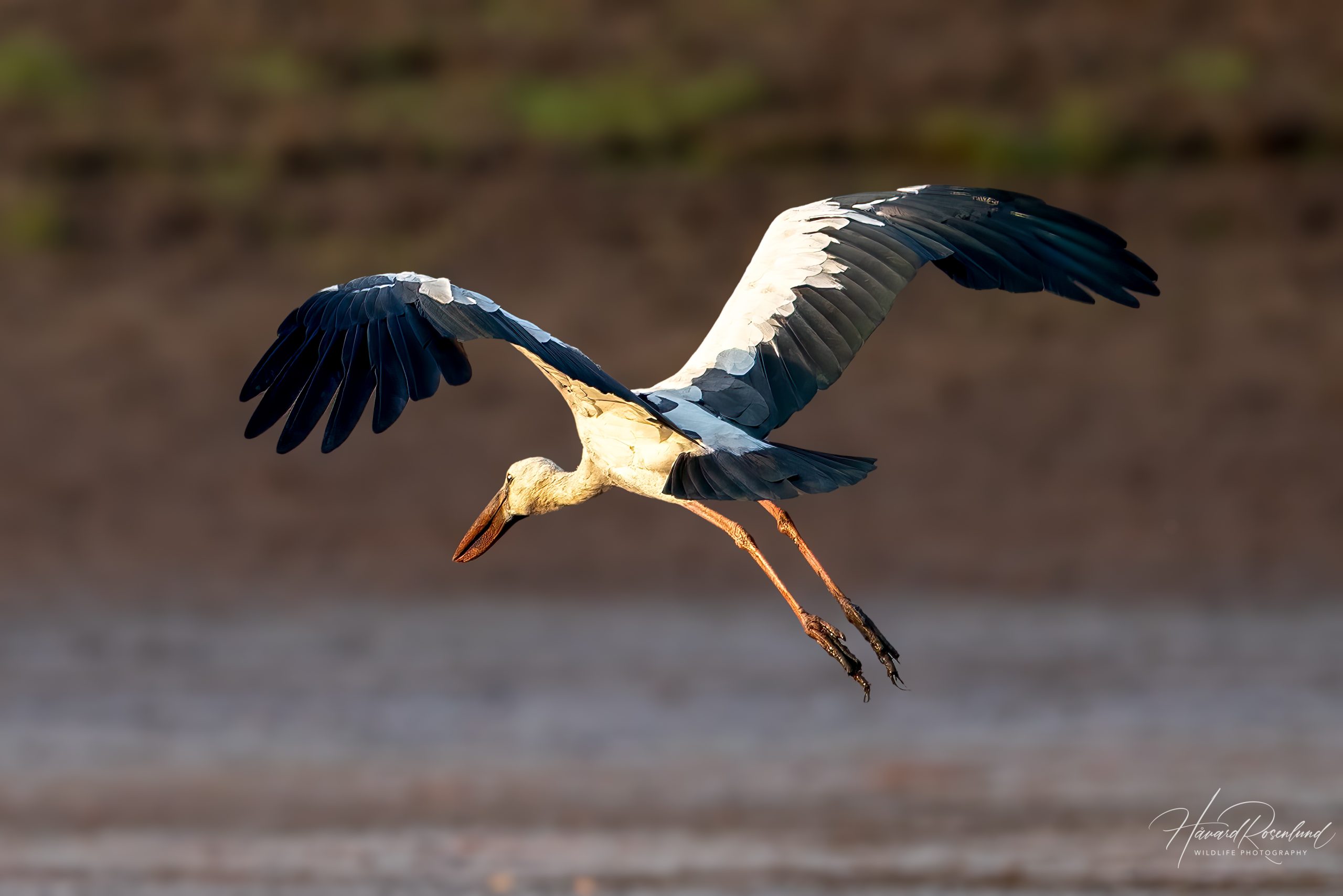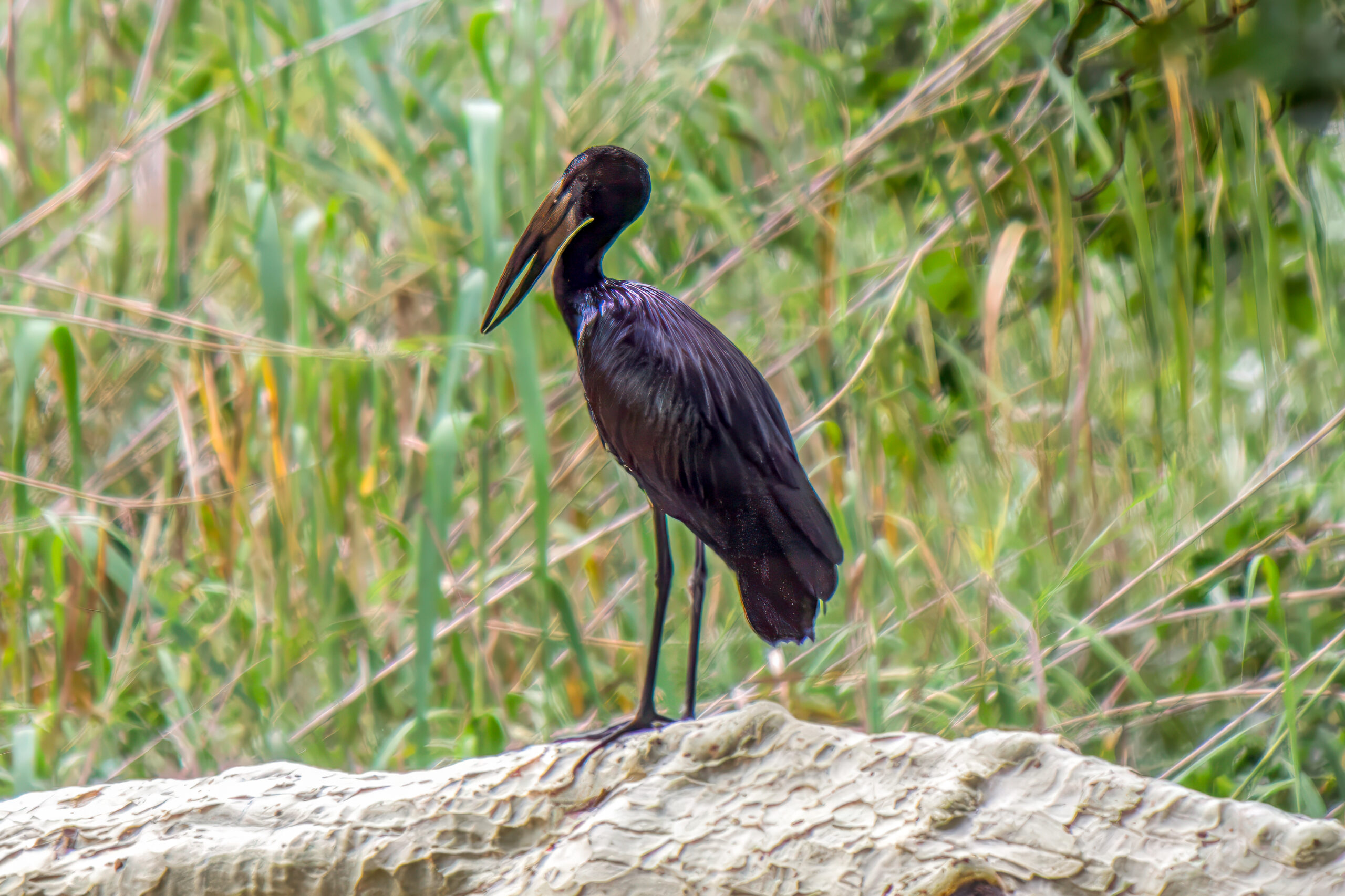Description
The Asian openbill (Anastomus oscitans) is a medium-sized stork primarily found in the Indian subcontinent and Southeast Asia. It is easily recognizable by its unique beak, which has a gap between the upper and lower mandibles, a feature adapted for feeding on mollusks. Adults typically measure 68 to 81 cm (27-32 in) in height, with a wingspan ranging from 147 to 149 cm (58-59 in). The plumage is predominantly white, with black flight feathers and tail, while juveniles display a more brownish coloration.
There are two species of open-billed storks, with the other being the African openbill (Anastomus lamelligerus). Even though they both have similar bills and appearance, the African species has a predominantly black plumage and is slightly larger. As the two species live on separate continents, they are never confused in the wild.
Diet & Habitat
Asian openbills are commonly found in wetland habitats such as marshes, swamps, and rice paddies. Their diet primarily consists of aquatic invertebrates, particularly snails and mollusks, which they expertly extract from their shells using their specialized beak. They also consume frogs, large insects, and occasionally fish. Their feeding technique involves probing in shallow water and vegetation to locate prey, using the gap in their bill to handle and manipulate their food efficiently.
Behavior
These storks are generally social birds, often seen in small to large flocks. They are diurnal, feeding during the day and roosting in groups at night. Asian openbills are known for their graceful flight, often soaring on thermals to conserve energy during long-distance movements. Their vocalizations are typically limited to low, guttural croaks, used primarily in social interactions within colonies.
Nesting
The breeding season for the Asian openbill varies geographically but generally occurs during the monsoon season when food is abundant. They nest in colonies, often with other stork species, building large stick nests in trees near water bodies. Both parents share incubation duties, which last about 27 to 30 days. Chicks are altricial, requiring extensive parental care; they fledge approximately 35 to 40 days after hatching. The parents continue to feed and protect the fledglings until they are fully independent.
Status
The Asian openbill is currently listed as least concern on the IUCN Red List, thanks to its wide distribution and stable population numbers. However, habitat destruction, particularly the drainage of wetlands and pollution, poses ongoing threats to their habitat. Conservation efforts focus on protecting wetland areas and maintaining sustainable agricultural practices to ensure the continued availability of their feeding and breeding grounds.




